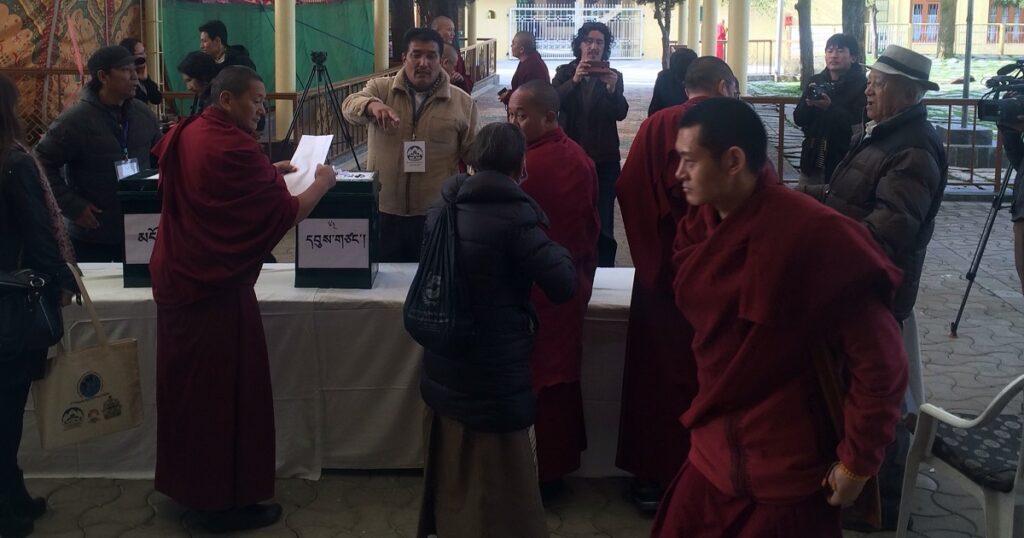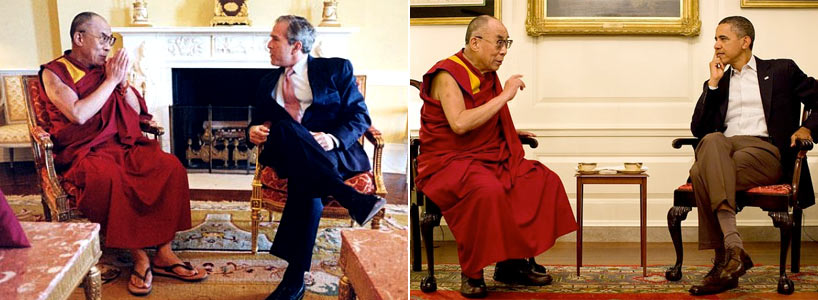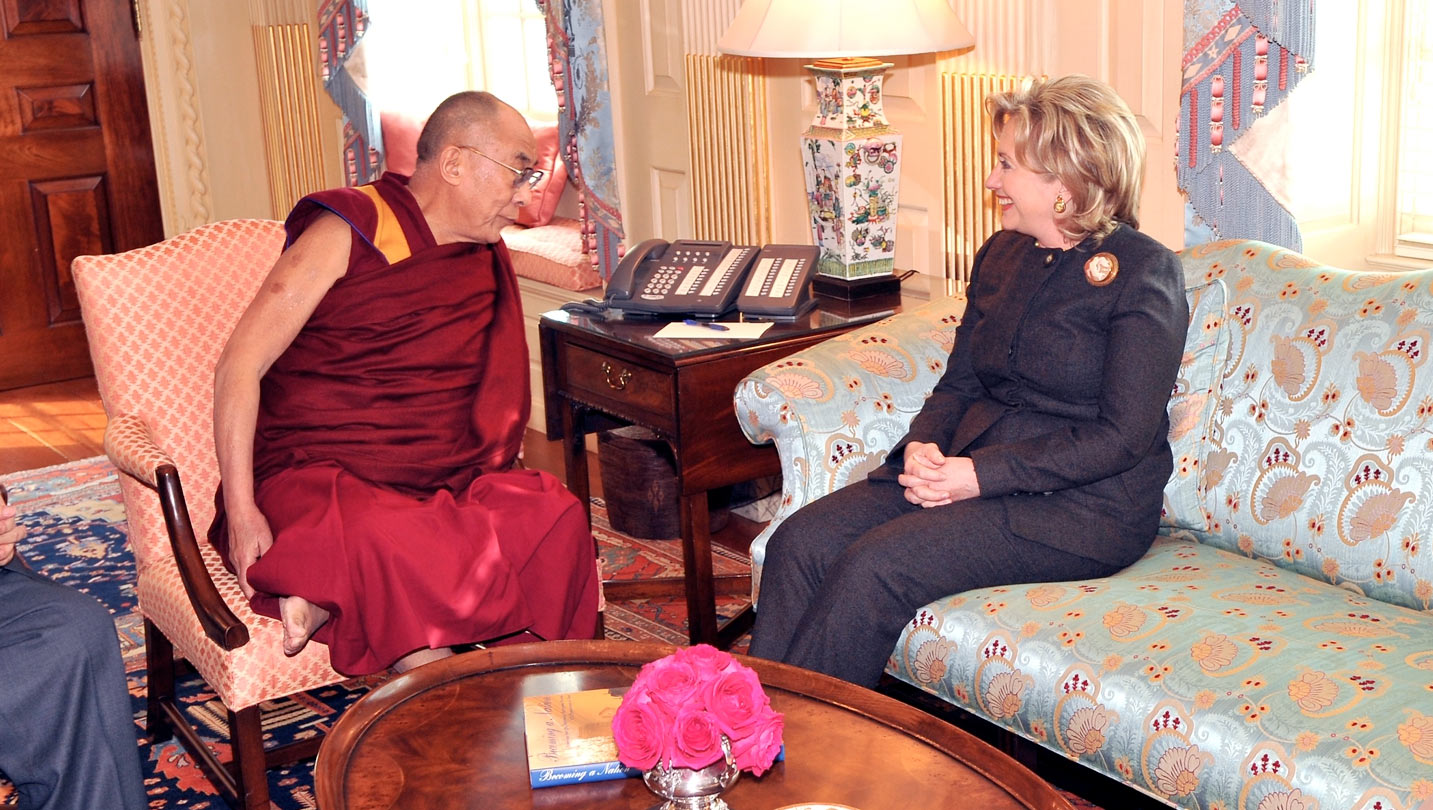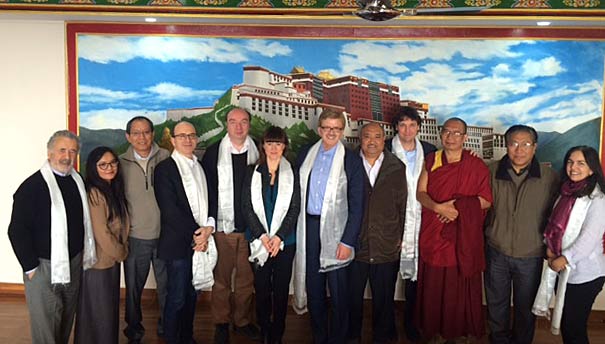During these six decades, much water has flowed not only down Bhagsunag, the small stream in Dharamsala, India, the headquarters of the Central Tibetan Administration, but also in rivers in more than 30 countries where Tibetans reside today. Similarly, Tibetan democracy has also gone through much evolution during this period.
Until 2011, the Tibetan democratic experiment had been a top-down one. It began with His Holiness the Dalai Lama implementing his political vision once he escaped from Tibet to freedom in India in 1959.
In February 1960, while in the sacred town of Bodhgaya in India, the Dalai Lama made an address to the Tibetan people explaining his political vision of a future Tibet. He told them then, “Since in Tibet, unlike in the past situation, it is important to establish a democratic governmental system with a blend of religion and politics, there needs to be a people’s assembly that has been constituted by the general public through an electoral system. You should, on your return, identify people in the community who are educated, capable, patriotic, and have the confidence of the people. For the moment, you should elect a deputy each from each of the four major religious [Buddhist] traditions and three each from each of the three provinces [of Tibet].”
The Dalai Lama continued with his quest to educate the Tibetan people about democracy. In mid-1960, during a visit to the Indian hill station of Dalhousie, the Dalai Lama explained to the Tibetan people his vision of reform in the Tibetan society. He said, “Changes must come in all spheres. The government structure will also have to undergo far-reaching reforms so that the people are more intimately associated with the policies of the government and the administration of the country. The task and responsibility of establishing improved political and religious institutions lies upon all of us.”
Meanwhile, on their return to their respective places in the Indian subcontinent, these Tibetan refugees introduced the process of democratic elections and 13 ‘Deputies’ were elected to what was known in English as the Commission of Tibetan People’s Deputies. The deputies took their oath of office on September 2, 1960. This historic date was later celebrated as ‘Tibetan Democracy Day.’
The Dalai Lama’s next step towards democratization was the introduction of the rule of law. He set up the process of the drafting of a constitution for future Tibet, the provision of which could be applied in the exile situation to the extent possible. He provided an outline of the principles of the Constitution on October 10, 1961 and subsequently a detailed document was prepared based on it. He promulgated the draft Constitution for Tibet on March 10, 1963.
The Dalai Lama highlighted the blend of Tibetan values and modern systems in this democratic constitution by saying in the foreword, “This takes into consideration the doctrines enunciated by Lord Buddha, the spiritual and temporal heritage of Tibet and the ideas and ideals of the modern world. It is thus intended to secure for the people of Tibet a system of democracy based on justice and equality and ensure their cultural, religious and economic advancement.”
The name of the Commission subsequently changed to Assembly of Tibetan People’s Deputies and thereafter to the current Tibetan Parliament-in-Exile. Its role in the administration also began to be further institutionalized.
Rule of Law in exile
In 1990 the Dalai Lama took the next step in his quest toward further democratization and establishment of the rule of law when he asked for a specific Charter for the Tibetans in Exile that would be the law for the Tibetan administration. The Charter was to incorporate the best of modern democratic system and traditional Tibetan values. Thus, the Charter was adopted by the Assembly of Tibetan People’s Deputies on June 14, 1991.
Under the section on “Principles of the Tibetan Administration” the Charter highlighted the Tibetan desire to be responsible members of the international community. It said, “It shall be the duty of the Tibetan Administration to adhere to the principles of the Universal Declaration of Human Rights as specified by the United Nations, and to also urge and encourage all other countries of the world to respect and comply with such Declarations, and shall emphasize the promotion of the moral and material well-being of the Tibetan people, the safeguarding of their social, cultural, religious and political rights, and in particular, the ultimate achievement of their common goal.”
With the establishment of the Tibetan Supreme Justice Commission, as stipulated by the Charter, on March 11, 1992, the three pillars of democracy became fully functional in the Tibetan democratic set up in exile. The Kashag, the administrative wing, was made more answerable to the parliament and the Justice Commission began adjudicating on cases within the framework of arbitration laws. The membership of the parliament was also expanded to give more voices to the people in the policy decision making process.
Despite these incremental steps, the Dalai Lama continued to be directly involved in the Administration, whether it was in the appointment of the members of the Kashag or being the final authority on assenting to bills before they became law.
Era of Direct Elections of the Administrative Head
In 2001, the Dalai Lama democratized the system further when he mandated amendments to the Charter giving authority to the public and their representatives the authority to select and appoint members of the Kashag. Since then the Chairman of the Kashag began to be directly elected by the people. The Chairman in turn sent his nominations for members of the Kashag to the parliament to decide. Prior to this, the convention was for the Dalai Lama to appoint the members of the Cabinet.
In this way, the Dalai Lama’s vision of having the people “intimately associated with the policies of the government and the administration” began to be realized. It may be pertinent to mention here that the parliament took this role seriously and even rejected a nomination by the very popular Prof. Samdhong Rinpoche to his cabinet. Of course, internal politics was involved here, but even then democracy was practiced, whether rightly or wrongly.
With this, the Dalai Lama said he was now in a period of semi-retirement with the elected leadership assuming the major role in the governance system.
End of era of top-down democracy
As the years passed His Holiness the Dalai Lama undertook the most significant step in 2011 to alter the Tibetan democratic structure. He announced the devolution of his authority to the three pillars of democracy. The Charter was amended to reflect this and the Kashag began to be totally answerable to the parliament.
The Dalai Lama announced then that he was ending more than 300 years of rule by the Dalai Lamas over the central Tibetan government. Equally important was the message that henceforth it was totally up to the Tibetan people to assume their responsibilities of Tibetan democracy.
The most important transformation since 2011 is the change in role of the Dalai Lama. From being the virtual head of state, he became the “symbol” of Tibetan identity, unity, and the free spokesman of all the Tibetan people. He no longer had any direct role in the governance system, with final authority being shouldered by the three pillars of democracy. As the Dalai Lama, he is now completely retired from any political responsibilities.
To the international community, the most visible aspect of this change is that since then the Dalai Lama stopped issuing his annual statement on March 10, the anniversary of the Tibetan National Uprising. Conventionally, that statement used to be considered his “state of the nation” speech reflecting political developments relating to the Tibetan issue.
Since then, we have had two elections for the post of Sikyong, the administrative head, and the parliament, including a very partisan and divisive campaigning for Sikyong in 2016. I wrote about that situation at the time, calling for civility.
As another Tibetan Democracy Day passes us by, we need to realize that the era of top-down democracy is over. We are in a period where we no longer enjoy the advantages of any direct intervention by the Dalai Lama and so whatever directions we are heading, it is up to the Tibetan people to take charge.
Having a proper democracy does not mean doing away with dissenting voices. Far from it, democracy will not work well when there is just one point of view. However, the way the views are expressed and acted upon are equally critical to the survival of Tibetan democracy. One can use dissent to create chaos and divisive environment or the same can be used to provoke candid discussions leading to considered decisions.
To put this in context, it is said that in the Tibetan community there are two broad political movements, one for independence and the other for the Middle Way Approach. What has often ended up happening is attacks and counter attacks between sections of followers of these two movements rather than finding common grounds and moving the struggle forward. I for one feel that if one doesn’t know how to express one’s devotion to the issue of Middle Way rightly, merely espousing it might even be counterproductive. Conversely, if one knows to project one’s adherence to the cause of Tibetan independence appropriately, it could even be supportive of the Tibetan leadership’s efforts through the Middle Way Approach to resolve the issue with the Chinese leadership.
It is generally understood that when we talk about the Tibetan struggle, it is between the Tibetans and the Chinese. But in another sense, the Tibetan struggle is as much about us Tibetans facing the challenges of democracy head on and exercising our rights as well as duties responsibly.
As I write this, we have upcoming elections for the Sikyong and parliament. We are already beginning to see the campaigning for Sikyong and to a lesser extent for the parliament. Will we see a repeat of the bitter experiences of 2015-2016, or will the Tibetan people in the free world show their maturity and together make Tibetan democracy a success? The jury is out, but it is all in the hands of the Tibetan people.
That is why Tibetan democracy matters.




